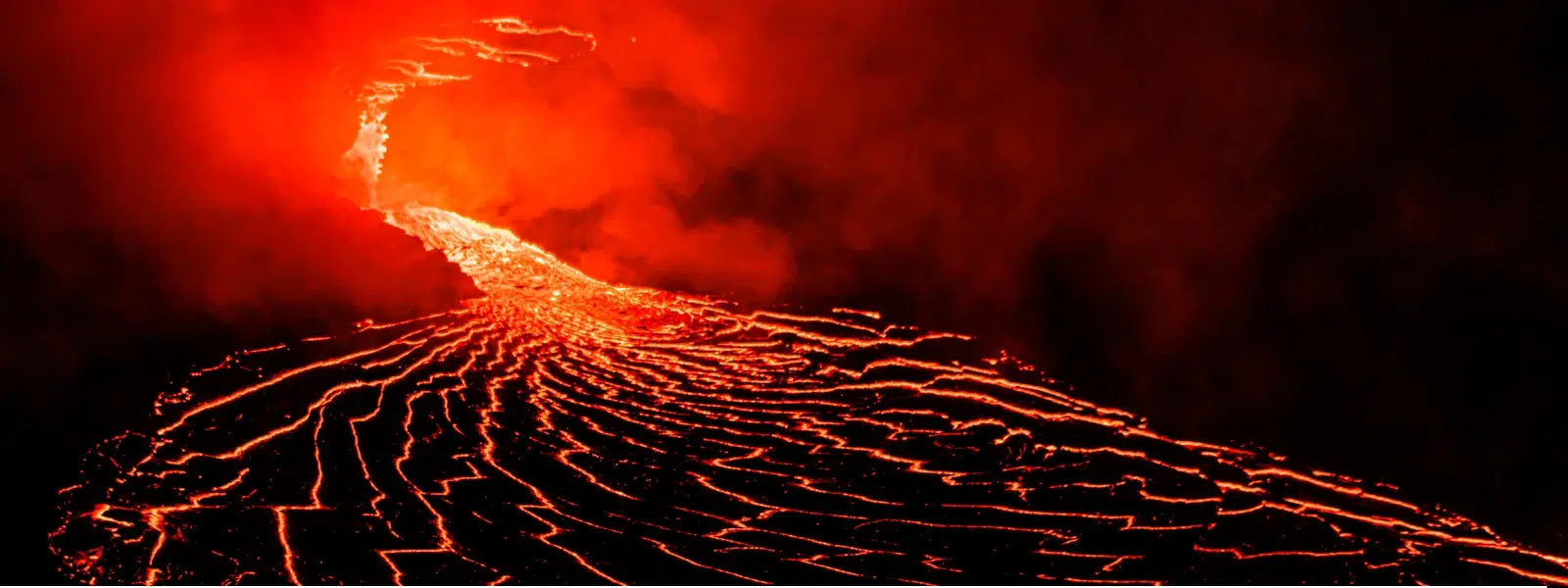
Flights
•04 min read

India's diverse geological landscape hides countless secrets, with lava plateaus standing as magnificent testaments to the Earth's fiery past. Consider the Deccan Traps – one of the largest volcanic formations in the world – whose vast expanse and layered history catch the eye of every wanderer and curious mind. In this post, we journey through the creation, evolution, and impact of lava plateaus in India, uncovering the mysteries of volcanic plateaus that have both shaped the land and enriched its natural resources.
Lava plateaus are vast, flat areas elevated by layers of solidified lava. Formed through prolonged volcanic activity, these plateaus differ from other elevated lands by their unique origin. Unlike sedimentary plateaus that are primarily built from eroded deposits, lava plateaus owe their formation to the overpowering force of volcanic eruptions. When hordes of molten lava pour out and repeatedly cover the landscape, they eventually create a smooth, expansive terrain. This characteristic contrast helps set them apart from other plateau types across the globe.
The backbone of these plateaus is built with igneous rock, especially basalt, which is a staple of volcanic plateaus in India. Volcanic eruptions force lava over large distances, and as it cools and solidifies, it produces the uniform layers typical of these formations. The basaltic layers, often rich in minerals, serve as a window into the eruption events that took place millions of years ago, revealing Earth's dynamic transformation processes.
Among the numerous volcanic plateaus in India, the Deccan Plateau and the famed Deccan Traps are undeniably the giants. Stretching over vast regions in the western and southern parts of the country, these basaltic plateaus have played a crucial role in sculpting India's physical geography. Beyond the Deccan, regions such as the Malwa Plateau and portions of the Maharashtra Plateau also present intriguing examples of lava rock formations in India, each offering its own slice of geological history.
Geological surveys and maps depict the spread of these impressive lava flow regions across India. From detailed cartography to satellite imagery, experts have been able to delineate the boundaries of these plateaus, offering insights into their formation and evolution. The distinct color patterns in geological maps often highlight the rich, basaltic composition of these areas, marking them as significant landmarks in India’s vast natural canvas.

The story of the Deccan Traps is as dramatic as it is intriguing. Formed during the Cretaceous period, this awe-inspiring formation came into being through massive volcanic eruptions. These eruptions spanned thousands of years, resulting in layers of lava that would eventually solidify into a vast, rugged plateau. The process not only carved out the Deccan Plateau but also influenced global climate and biodiversity during that era.
The creation of these plateaus involves a fascinating interplay of natural forces. Lava flows, cooling and solidification, as well as multiple episodes of volcanic activity, contribute to their complex structure. Tectonic movements further shape these areas, reinforcing the idea that the Earth is in a constant state of flux. This dynamic process continues to define the landscape of India, making volcanic plateaus a critical study in geological evolution.
Lava plateaus in India are renowned for their layered basaltic structures and mineral-rich composition. These features not only paint a picture of a volatile past but also actively contribute to the region’s biodiversity. The porous nature of basalt can influence soil quality and local microclimates, making these areas hotspots for unique flora and fauna. Through their geological features, these plateaus continue to shape ecosystems and inspire scientific inquiry.
Beyond their scientific intrigue, lava plateaus offer practical benefits. Their mineral wealth supports agriculture and extensive mineral extraction, bolstering local economies. These plateaus also attract tourism, as many seek to witness the raw beauty of nature formed by ancient lava flows. Moreover, the ecological balance maintained by these volcanic lands sustains unique habitats, ensuring that both human and non-human communities flourish together.
"Did You Know? The Deccan Traps cover an area of over 500,000 square kilometers, making it one of the largest volcanic formations on Earth. This region is also rich in minerals like iron ore and manganese, contributing significantly to India's economy."
India's volcanic heritage is not limited just to lava plateaus. Other volcanic landforms, including craters and volcanic hills scattered across the subcontinent, share a common ancestry. These formations, though often lesser in scale, contribute valuable context to the overall geographical tapestry. Observing them alongside the larger lava plateaus offers deeper insights into the region's volcanic activity over millions of years.

Volcanic activity has wielded a transformative influence over India's geographical identity. The terrain, a blend of plateaus, plains, and mountain ranges, has been continuously sculpted by the forces of nature. Understanding how lava plateaus interact with surrounding geological structures is essential in comprehending the broader impact on India's environment, climate, and biodiversity. Every volcanic hill and lava flow tells a story that together, narrate the epic saga of India's land formation.
The Deccan Plateau is formed by lava and is one of the most prominent examples of a lava plateau in India.
The seven major plateaus in India include the Deccan Plateau, Malwa Plateau, Chota Nagpur Plateau, Bundelkhand Upland, Meghalaya Plateau, Kathiawar Plateau, and Ladakh Plateau.
Yes, the Deccan Trap is a lava plateau formed by extensive volcanic activity during the Cretaceous period.
A lava plateau is a flat, elevated landform created by successive layers of lava flows from volcanic eruptions.
India has several lava plateaus, with the Deccan Plateau being the most significant and widely recognized.
Lava plateaus in India are not just remarkable geological structures; they are living records of the Earth's volcanic history. Their formation, marked by the fiery force of eruptions and gradual cooling, has left an indelible mark on the country’s landscape. These natural wonders are integral to understanding both the past and present dynamics of Indian geography. Exploring them not only enriches our knowledge but also deepens our connection with the natural world.